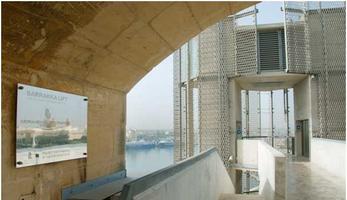SUMP for Valletta
Basic Information
Mobility solution ID
MAL 2.1
Timeline
- complete
City
Project
Thematic areas
Behavioural change & mobility management
- Mobility marketing and awareness raising
- Mobility Planning
Summary
The main goal of this measure was to create a SUMP specifically for the Valletta Region, one that provides specific, tried and tested solutions to improve the mobility system of the region and encourages both residents and visitors to use sustainable modes of transport and engage in sustainable practices.
The main objectives of the SUMP were to improve the quality of life, to reduce transport emissions, to make the region more attractive, and to introduce the SUMP concept to the Maltese Islands. The compilation from previous studies along with the formulation and the piloting of sustainable mobility measures were also implemented through the CIVITAS DESTINATIONS project.
Implementing sustainable mobility
Brief Overview
The SUMP process consisted of the identification of the main problems in the transport system, the creation of an inventory of potential SUMP measures, and an analysis of their feasibility.
Several measures were already tested out in the timeframe of the DESTINATIONS project, as the piloting and evaluation of measures developed as part of DESTINATIONS are included as measures in the SUMP too.
The SUMP development process was evaluated through the SUMP self-assessment tool developed by ELTIS to enable planning authorities to quickly assess the compliance of their plan with the European Commission’s SUMP requirements as set out in the EC’s Urban Mobility Package.
SUMP measures
The Strategy for Valletta (2006) included a number of integrated actions aimed at restraining non-essential car use and promoting alternative green modes of travel. The effect of these actions resulted in a modal shift of 10% away from the car on to public transport and included among others road pricing and pedestrianisation.
A series of innovative measures never tested within the Maltese context have been introduced in the context of this SUMP, such as the implementation of a national car-sharing fleet, bike-sharing system, the procurement and operation of an electric van for shared logistics operations, a Green Mobility award for hotels, and an app to promote sustainable mobility with tourists.
Research was conducted in the development of the SUMP, through the analysis of other cities’ SUMPs, the creation of an inventory of potential SUMP measures and an analysis of their feasibility, as well as through the piloting and evaluation of measures developed as part of DESTINATIONS, which are included as measures in the SUMP too.
Stakeholder engagement
Stakeholders were involved in order to collect information and gauge perceptions on the main issues related to transport and mobility. Several meetings were also conduced to carry out questionnaires and to discuss the validity of the measures. Data from the national statistics office and from previous studies was compiled and presented in the SUMP Baseline document.
Outcomes
The self-assessment results show that, through the SUMP process as part of the DESTINATIONS project, the score increased from a baseline score of 69 to an ex-post score of 85 out of 100.








